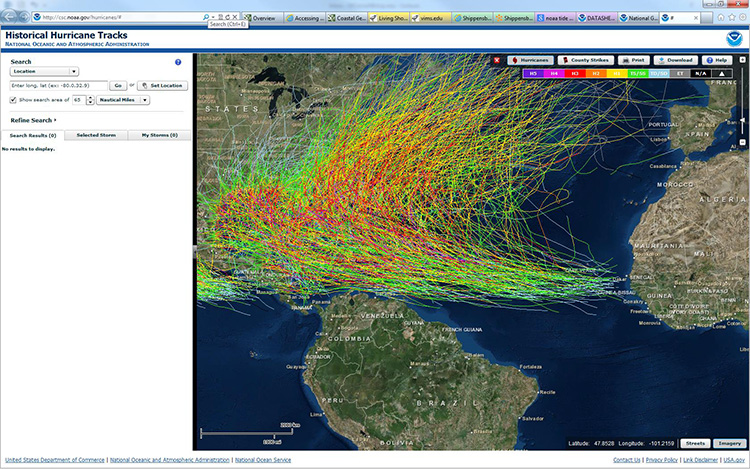Historic Storm Surge Records
As we mentioned above, coastal settings with embayments are particularly prone to high waters from storm surges, which get magnified when they enter a bay or river mouth. Rocky shorelines are less susceptible because these shorelines are often configured with relatively deep offshore bathymetric approaches that do not support the development of significantly high volumes of water in the nearshore region. In the U.S., the largest storm surge ever recorded occurred during Hurricane Katrina in the area of Pass Christian, Mississippi, where the level was increased as it entered several bays, including Bay St. Louis. Combined with wave heights, the storm surge at Biloxi, Mississippi created a high watermark in excess of 30 feet.
Based on modeling using NOAA’s SLOSH (Sea Lake and Overland Surge from Hurricanes) program, geoscientists have predicted the highest theoretical storm surges, and all occur on either the Gulf Coast or the East Coast in areas that are heavily populated and developed. Go to: U.S. Storm Surge Records to read about how first-hand evidence, such as high watermarks, and modeling such as the SLOSH models, can help us understand the potential of storm surge.
Globally, the highest storm surge ever is reported in northern Australia in 1899 during a cyclone. Although the exact height is still uncertain, it is reported to have been in excess of 40 feet. For details, see World Storm Surge Records. In the Indian Ocean, a cyclone produced a surge measured at just over 10 meters (~34 feet) in Bangladesh in 1970. This event produced the largest number of casualties on record for all storms globally, see The 35 Deadliest Tropical Cyclones in World History.
You can use the NOAA Historical Hurricane Tracks server to search for specific storms. See the link below the image in the figure below.

